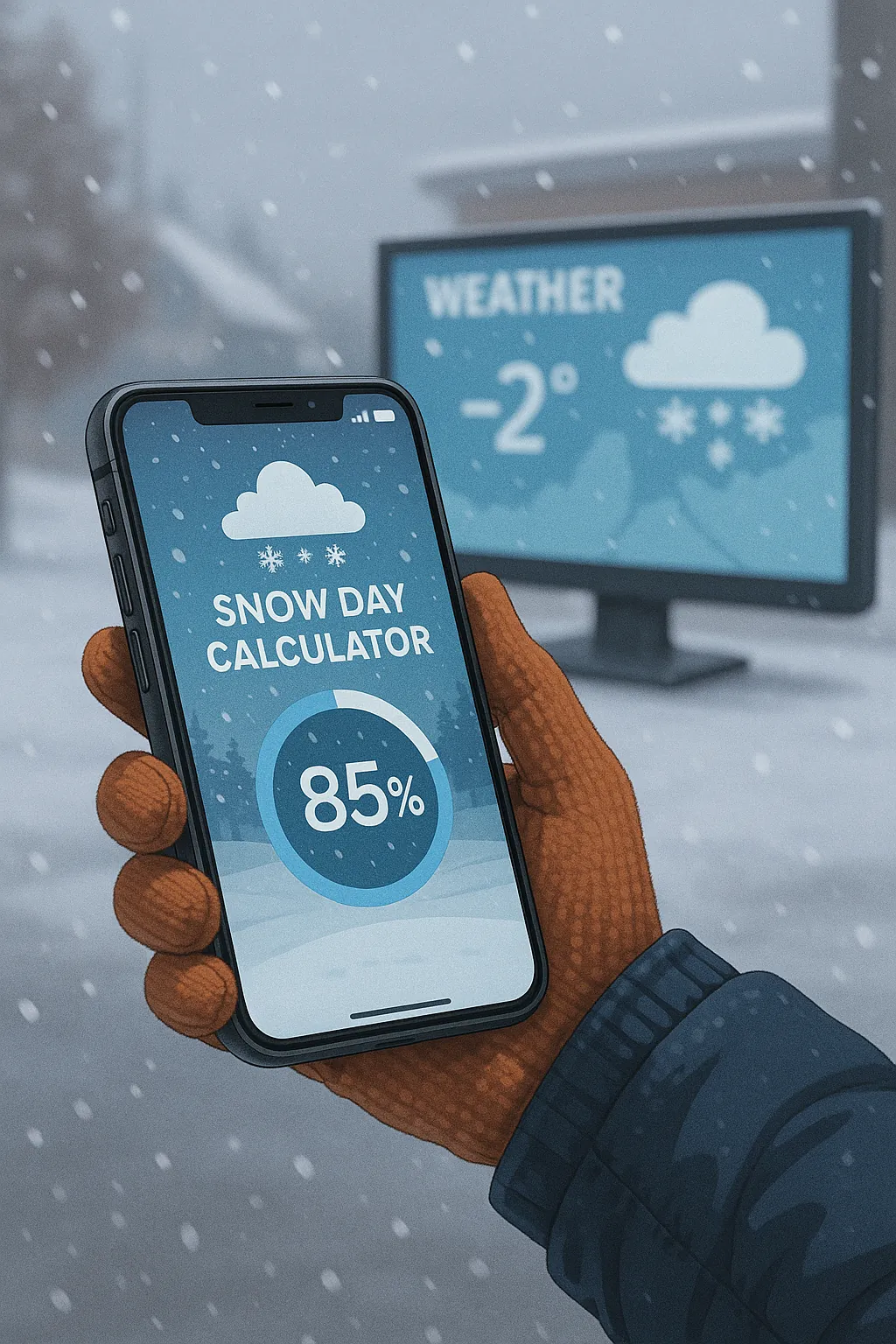Snow Day Calculator vs. Local Weather Reports

When snowflakes start falling, parents and students scramble to find out whether class will be cancelled. Should you rely on a dedicated snow day calculator or tune in to local television weather reports? The answer isn’t an either‑or; each has its own advantages and limitations. In this article we’ll compare the two approaches so you can make the most informed decision and use both tools together.
What a Snow Day Calculator Offers
A snow day prediction calculator distils complex meteorological data into a single probability score. It’s designed to be user‑friendly: enter a postal code and choose your school type, and you’ll get a percentage representing the chance of a closure. These tools incorporate expected snowfall, temperature, wind chill and timing. They may also factor in regional norms — for example, our snow day calculator Michigan uses different thresholds than our calculator for Texas. Because calculators are algorithmic, they treat everyone equally and provide consistent results regardless of who is viewing them.
What Local Weather Reports Offer
Local meteorologists present the forecast in context. They interpret raw model data and apply their knowledge of local microclimates, road conditions and school district policies. A weather report can alert you to other hazards, such as ice storms or high winds, that might not trigger a snow day but still impact travel. Meteorologists often speak directly with school officials and can provide insight into decisions before they’re announced. For example, if your district always waits until 5 AM to decide, the meteorologist may know exactly when to expect a call.
The Strengths and Weaknesses
Strengths of Calculators
- Objectivity: Calculators apply the same criteria to everyone, eliminating personal bias.
- Speed: Results are instant. You don’t have to watch an entire weather segment to find the information you need.
- Global Reach: Many calculators, like ours, accept postal codes from dozens of countries, whereas local reports focus on a specific region.
Weaknesses of Calculators
- Limited Data: Calculators rely on automated feeds. If a storm changes course suddenly, it may not reflect in the probability until the next update.
- No Human Context: They don’t know if your district is having heating issues or if buses were recently outfitted with snow tyres. Administrators have the final say.
Strengths of Local Reports
- Human Expertise: Meteorologists interpret nuance, explain uncertainty and deliver updates as conditions evolve.
- Community Knowledge: They understand local school boards and can provide hints about likely decisions.
Weaknesses of Local Reports
- Regional Focus: If you live in a rural area outside the broadcast zone, you might not get detailed information relevant to your school.
- Time‑Consuming: You often need to watch or read through segments to find the information you need.
Why You Should Use Both
Using a snow day prediction calculator in tandem with your local weather report gives you the best of both worlds. Start with the calculator to get a quick, objective assessment of your chances. Then tune in to the forecast to hear about any factors the calculator doesn’t account for, such as ice storms, power outages or transportation issues. Together, these tools provide a more complete picture.
If you want to see how accurate calculators can be, read How Accurate Is a Snow Day Calculator?. For a deeper understanding of what goes into the prediction, check out Top 5 Factors That Determine a Snow Day. And when you’re ready, head back to the home page to try the tool yourself.
Tags: snow day calculator vs local weather reports, snow day prediction calculator, snow day calculator michigan, school snow day calculator
